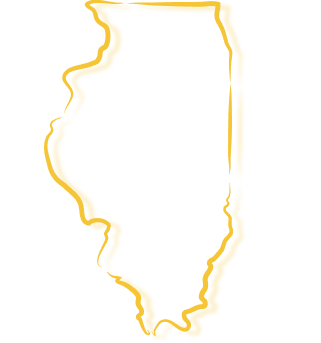St. Louis Swimming Pool Accident Lawyer
St. Louis Swimming Pool Accident Attorney
Swimming pools can be extremely dangerous for children and adults alike. As the CDC reports, approximately 10 people die in the United States each day as a result of unintentional drowning. Non-fatal injuries, including those that cause severe brain damage, are also very common. On average, five children are treated in ERs for non-fatal submersion injuries for every child that dies from drowning.
Pool owners both residential and public need to be constantly vigilant and about premises and safety standards. A fun recreational activity can quickly go awry when safety rules are not followed or maintenance falls behind. Owning a pool is both a privilege and a responsibility and taking that responsibility lightly can result in injuries and death. Public pools and club pool managers/owners must also practice high safety standards in order to avoid serious injuries or death for swimmers. Young children should always be closely supervised while around water.
In some cases, swimming pool accidents occur as a result of negligence. Pool owners may fail to obey code requirements to secure their swimming pools or otherwise may be unreasonably careless and put people at risk in their pool area. Those who own the pool and/or those who are responsible for making the pool area safe may be held legally responsible when someone is injured in a swimming pool accident, but the accident victims or surviving family members must take legal action to recover compensation.
An experienced St. Louis premises liability lawyer at The Cagle Law Firm can help if you or someone you love was injured in a pool accident. Contact us today to learn more about how we can help with your claim. At The Cagle Law Firm, Your Case Is Safe With Us.

Data on Swimming Pool Accidents
Swimming pool accidents are far too common in the United States. In fact:
- Between 2005 and 2009, an average of 3,533 non-boating-related fatal drowning accidents occurred each year in the U.S.
- Children under the age of 14 make up approximately 20 percent of all drowning deaths.
- More than half of those who are involved in a non-fatal drowning incident require hospitalization or ongoing care after the accident. In many cases, those who suffer non-fatal drowning injuries will experience long-term cognitive impairments, including being in a permanent vegetative state or developing severe learning disabilities or memory problems.
- In 2009, more than 30 percent of children between the ages of 1 and 4 who died as a result of an unintentional injury died in a drowning incident.
- For children between the ages of 1 and 4, the majority of drowning incidents occur in residential swimming pools.
- For children under age 5, 11 percent of the drowning incidents happen in portable pools.
- Almost 20 percent of fatal drowning injuries among children occur in public swimming pools when a lifeguard is on duty.
Unfortunately, both children and adults can suffer permanent injuries or drown to death within just a few minutes, often without anyone realizing what is going on. Many people believe that drowning looks like it does in the movies, with the person who is drowning screaming for help and flailing his or her arms. In reality, however, a person who is drowning is not able to cry out for help and not able to move because of the body’s instinctive reactions.
Instead, a person who is drowning may be in a vertical position and may look as if he or she is trying to climb a ladder or trying to move toward land, but not making headway. Typically, a person who is drowning will have the head low in the water and/or tilted back with the mouth open at or just below the water level.
Other Types of Swimming Pool Accidents
Someone who dives or jumps into a pool that is too shallow could suffer head injuries, broken bones or a severed spinal cord. A person who is in a swimming pool with electrical equipment nearby could be electrocuted.
Both drowning and other pool injuries can be caused by many levaquin different things, including:
- Unfenced swimming pools
The CDC reports that a four-sided isolation fence can reduce the risk of a child drowning by as much as 83 percent compared with a three-sided property-line fence. Local codes usually require a secure fence around swimming pools, generally with a self-latching gate. When a pool owner fails to secure the pool to prevent trespassers, the pool owner may be considered negligent and liable for injuries. - Electrical items near pools
Outdoor radios and other electrical items kept near swimming pools can create a hazard. A person electrocuted in a swimming pool could suffer death or serious injury. - Broken pool parts
If a pool ladder is broken or a diving board or slide is damaged, this can cause a swimming pool accident. Someone could be trapped in the pool by a broken ladder and drown as a result, while a broken diving board or slide could lead to fall injuries. A broken pool drain – or one that is poorly designed – could also cause a child to become trapped in a pool. - Unsafe swimming pool areas
Broken tiles or slippery areas around a swimming pool could cause a fall or drowning if someone slips and falls into the pool. - Inadequate supervision
No one should swim alone, and children always need to be supervised when around a pool. When a child is under the control of a caregiver in a swimming pool, the caregiver needs to be reasonably cautious when supervising the child. Public pools that have lifeguards on duty are also expected to ensure that their lifeguards are adequately trained and pay attention to what swimmers are doing. - Improperly marked depth indicators
An estimated 13 percent of diving accidents in swimming pools occur at depths of 3.25 to 9 feet, while the majority of diving accidents occur when the pool has a depth of 3.25 feet or less. The depth of a pool can be deceptive, and the depth needs to be clearly marked. If the pool is too shallow for safe diving, this needs to be indicated prominently.
Unfortunately, as these causes show, many swimming pool accidents could be prevented if pool owners and those operating swimming pools recognized and addressed the dangers that a pool presents to children and to adults.
Liability for Swimming Pool Accidents
Swimming pool owners have a responsibility to help keep others safe from the risk of a pool accident. This is true not only for apartments, hotels, or other commercial buildings that offer pools but also for public pools that allow guests to go swimming. Private pool owners also have certain responsibilities.
Pool owners, for example, are expected to keep their pool area secure. Pools and pool areas must be maintained in such a way that no unreasonable risk is created. Those who open their pools to the public need to either provide supervision or warn that there are no lifeguards on duty.
In any situation where a swimming pool owner or the operator of a public pool falls short of his or her obligations, the pool owner/operator may be responsible for compensating accident victims for medical bills, lost income, pain and suffering, emotional distress, and other damages. Pool owners may be responsible for injuries that occur to trespassers – particularly children – on their property, since pools may be considered an “attractive nuisance.”
Taking Legal Action After a Swimming Pool Accident
If you or a loved one has been injured in or around a swimming pool, you need to have a top-notch legal advocate on your side. At The Cagle Law Firm, our lawyers have extensive experience with serious injury claims.
To learn more about how we can help with your case, contact us today for a free consultation and claim evaluation. Fill out our online contact form or call us at (314) 276-1681
Contact Us Today
The Cagle Law Firm serves accident and injury clients throughout St. Louis and the greater St. Louis metro area, including St. Louis Counties of Chesterfield, Wildwood, Eureka, Ladue, Olivette, Clayton, Kirkwood, Fenton, Affton, and Jefferson Counties of Arnold, High Ridge, Antonia, House Springs, and the eastern Missouri and southern Illinois communities. If you or your family needs legal assistance with your personal injury case, call The Cagle Law Firm at (314) 276-1681 or use our online contact form to request a free case review or get more information.
Areas Served
The Cagle Law Firm – Missouri
The Cagle Law Firm – Illinois
The Cagle Law Firm – Kentucky
CONTACT THE CAGLE LAW FIRM TODAY
Request your FREE CASE REVIEW today by calling (314) 276-1681 or by sending a message through the site contact form. Your contact info stays private and is only used to reply to your inquiry.
Whether you need information about a new injury or existing injury, our lawyers answer your questions with no-risk and no followup marketing.
Free Consultations and Case Reviews
Questions? Ask An Attorney
Fields marked with an * are required
Copyright © 2025 St. Louis Personal Injury Lawyers | The Cagle Law Firm. All rights reserved.
Disclaimer | Site Map | Privacy Policy
Get a free case review with St. Louis' best personal injury lawyers to help you win top compensation




